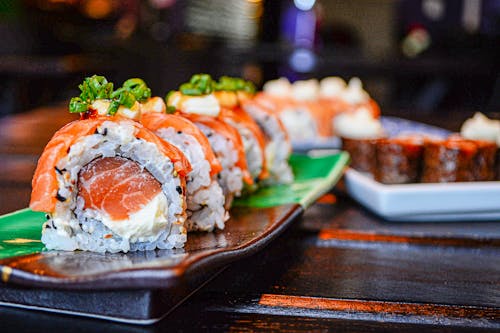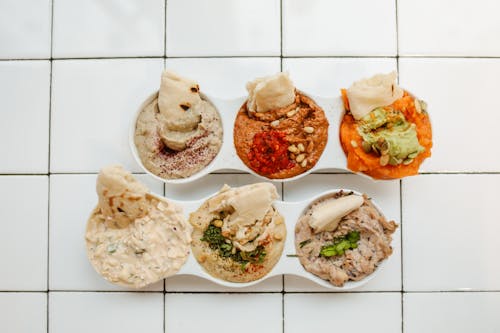
Food is a universal language that transcends borders and connects people from all walks of life. Each country has its own culinary heritage, reflecting its history, culture, and geography. This essay explores iconic dishes from 20 different countries, offering a gastronomic journey that celebrates the diversity and richness of global cuisine. From savory delights to sweet treats, these dishes not only satisfy our taste buds but also tell the stories of the places they come from.
Italy: Pizza Margherita
History and Significance
Pizza Margherita, originating from Naples, is a symbol of Italian culinary tradition. Created in honor of Queen Margherita of Savoy in 1889, this simple yet flavorful dish represents the colors of the Italian flag with its red tomatoes, white mozzarella, and green basil.
Ingredients and Preparation
The key to an authentic Pizza Margherita lies in its ingredients: San Marzano tomatoes, fresh mozzarella di bufala, basil leaves, and extra virgin olive oil. The dough, made from flour, water, salt, and yeast, is hand-stretched and topped with these ingredients before being baked in a wood-fired oven.
Japan: Sushi
History and Significance
Sushi, a staple of Japanese cuisine, dates back to the 8th century. Initially, it was a method of preserving fish in fermented rice. Today, sushi is an art form, showcasing the balance of flavors, textures, and presentation.
Ingredients and Preparation
Sushi comes in various forms, including nigiri, sashimi, and maki rolls. Key ingredients include vinegared rice, fresh fish, seaweed, and vegetables. The preparation requires skill and precision, with chefs training for years to perfect their craft.
Mexico: Tacos
History and Significance
Tacos are a beloved Mexican street food with a rich history dating back to pre-Columbian times. They are a versatile dish, reflecting the diverse regions and ingredients of Mexico.
Ingredients and Preparation
Tacos consist of a soft or hard corn tortilla filled with a variety of ingredients such as seasoned meat, beans, cheese, and fresh vegetables. Popular types include carne asada, al pastor, and fish tacos, often garnished with salsa, cilantro, and lime.
India: Butter Chicken
History and Significance
Butter chicken, or Murgh Makhani, hails from Delhi and is a staple of Indian cuisine. Created in the 1950s at Moti Mahal restaurant, this dish combines rich flavors and a creamy texture, making it a global favorite.
Ingredients and Preparation
Butter chicken is made with marinated chicken cooked in a tandoor, then simmered in a sauce of tomatoes, butter, cream, and aromatic spices like garam masala, turmeric, and cumin. It is often served with naan or rice.
France: Coq au Vin
History and Significance
Coq au Vin is a classic French dish with roots in rustic cuisine. Traditionally made with rooster, it symbolizes French culinary artistry and the use of local ingredients.
Ingredients and Preparation
The dish features chicken braised with red wine, mushrooms, onions, and bacon. The slow-cooking process enhances the flavors, creating a rich and hearty meal. It is typically served with mashed potatoes or crusty bread.
Thailand: Pad Thai
History and Significance
Pad Thai is a popular street food in Thailand, known for its vibrant flavors and quick preparation. Introduced during World War II as part of a national identity campaign, it has become a global favorite.
Ingredients and Preparation
Pad Thai consists of stir-fried rice noodles with tofu, shrimp, or chicken, eggs, and bean sprouts, flavored with tamarind paste, fish sauce, and lime juice. It is garnished with crushed peanuts and fresh cilantro.
Greece: Moussaka
History and Significance
Moussaka is a traditional Greek dish that showcases the country’s culinary heritage. With influences from the Middle East, it represents the fusion of different cultures over centuries.
Ingredients and Preparation
Moussaka is a layered casserole made with eggplant, minced lamb or beef, tomatoes, and béchamel sauce. The layers are baked until golden and bubbly, resulting in a comforting and flavorful dish.
China: Peking Duck
History and Significance
Peking Duck is a renowned dish from Beijing, known for its crispy skin and succulent meat. Dating back to the imperial era, it is a symbol of Chinese culinary excellence.
Ingredients and Preparation
The duck is seasoned, air-dried, and roasted until the skin is crispy. It is traditionally served with thin pancakes, hoisin sauce, and scallions. The preparation is meticulous, requiring several days of preparation.
Spain: Paella
History and Significance
Paella, originating from Valencia, is a quintessential Spanish dish. It reflects Spain’s agricultural wealth and culinary diversity, with variations found in different regions.
Ingredients and Preparation
Paella is a rice dish cooked in a wide, shallow pan. It includes ingredients such as saffron, seafood, chicken, rabbit, and vegetables. The dish is known for its socarrat, the crispy rice crust at the bottom of the pan.
Lebanon: Hummus
History and Significance
Hummus is a staple of Middle Eastern cuisine, with roots tracing back to ancient times. It represents the simplicity and nutritional richness of Lebanese food.
Ingredients and Preparation
Hummus is a creamy dip made from blended chickpeas, tahini, lemon juice, garlic, and olive oil. It is often served with pita bread, vegetables, or used as a spread in sandwiches.
Brazil: Feijoada
History and Significance
Feijoada is a hearty stew considered the national dish of Brazil. Originating from the fusion of Portuguese and African culinary traditions, it reflects Brazil’s diverse cultural heritage.
Ingredients and Preparation
The stew is made with black beans, pork, and beef, slow-cooked with onions, garlic, and spices. It is traditionally served with rice, collard greens, and orange slices to balance the richness of the dish.
Morocco: Tagine
History and Significance
Tagine is a North African dish named after the earthenware pot in which it is cooked. It embodies the aromatic and flavorful cuisine of Morocco, influenced by Berber, Arab, and French cultures.
Ingredients and Preparation
A typical tagine includes meat (such as lamb or chicken), vegetables, dried fruits, and a blend of spices like cinnamon, cumin, and saffron. The slow-cooking method in the conical pot allows the flavors to meld beautifully.
History and Significance
The hamburger is an iconic American dish, symbolizing fast food culture and culinary innovation. Its origins can be traced back to the early 20th century, and it has since become a global phenomenon.
Ingredients and Preparation
A classic hamburger consists of a ground beef patty, grilled and served in a bun with various toppings such as lettuce, tomato, cheese, pickles, and condiments like ketchup and mustard.
Turkey: Kebabs
History and Significance
Kebabs are a significant part of Turkish cuisine, with a history dating back to the medieval period. They highlight the use of grilled meats and the country’s rich culinary traditions.
Ingredients and Preparation
There are various types of kebabs, but a popular version is shish kebab, which features marinated chunks of meat (usually lamb or chicken) skewered and grilled. It is often served with rice, vegetables, and flatbread.
Ethiopia: Doro Wat
History and Significance
Doro Wat is a spicy chicken stew that is a staple of Ethiopian cuisine. It is traditionally served during festive occasions and reflects the country’s love for bold flavors and communal dining.
Ingredients and Preparation
The stew is made with chicken, hard-boiled eggs, and a rich, spicy sauce called berbere. It is typically served with injera, a spongy flatbread used to scoop up the stew.
Vietnam: Pho
History and Significance
Pho is a beloved Vietnamese noodle soup that has gained international popularity. It is a comfort food that represents the essence of Vietnamese culinary philosophy—freshness and balance.
Ingredients and Preparation
Pho is made with rice noodles, a flavorful broth (usually beef or chicken), and garnished with herbs like basil, cilantro, and mint. It is often served with lime wedges, bean sprouts, and chili.
Peru: Ceviche
History and Significance
Ceviche is a refreshing seafood dish that is a staple of Peruvian cuisine. It showcases the country’s rich coastal resources and the influence of indigenous and Spanish culinary traditions.
Ingredients and Preparation
The dish consists of raw fish marinated in citrus juice (usually lime or lemon), which “cooks” the fish. It is typically mixed with onions, cilantro, and chili peppers, and served with corn and sweet potatoes.
Russia: Borscht
History and Significance
Borscht is a beet soup that is a key part of Russian cuisine. It is enjoyed hot or cold and symbolizes the agricultural roots and cultural traditions of Eastern Europe.
Ingredients and Preparation
Borscht is made with beets, cabbage, potatoes, carrots, and sometimes meat (usually beef or pork). It is flavored with vinegar and dill, and often served with sour cream.
South Korea: Kimchi
History and Significance
Kimchi is a fermented vegetable dish that is central to Korean cuisine. It is known for its health benefits and robust flavor, and it represents the importance of preservation techniques in Korean food culture.
Ingredients and Preparation
Kimchi is typically made with napa cabbage, radishes, garlic, ginger, and chili pepper. The vegetables are salted, seasoned, and left to ferment, developing a complex, tangy taste.
Australia: Pavlova
History and Significance
Pavlova is a meringue-based dessert named after the Russian ballerina Anna Pavlova. It is a beloved dish in Australia and New Zealand, often served during celebrations.
Ingredients and Preparation
The dessert features a crisp meringue shell with a soft, marshmallow-like interior, topped with whipped cream and fresh fruits like kiwi, strawberries, and passionfruit. The combination of textures and flavors makes it a delightful treat.

Exploring the iconic dishes of 20 different countries offers a delicious glimpse into the diverse culinary landscapes of our world. Each dish tells a unique story of its origin, culture, and the people who have cherished and passed down these recipes through generations. From the comforting warmth of Italian Pizza Margherita to the exotic flavors of Moroccan Tagine, these culinary treasures invite us to appreciate the rich tapestry of global cuisine. By savoring these iconic dishes, we embark on a journey of discovery, connecting with the heart and soul of different cultures, one bite at a time.









